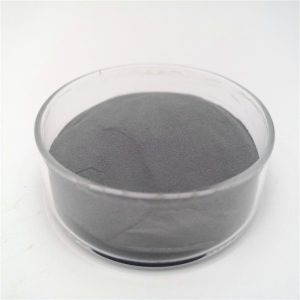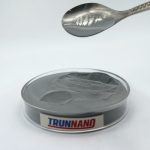Professional and high-quality metal alloys, ceramic products and concrete additives | RBOSCHCO
PRODUCT PARAMETERS
Description
Overview Of 3D Printing Alloy Metal Materials Stainless Steel 440C Metal Powder
3D Printing Alloy Metal Materials Stainless Steel 440C Metal Powder refers to stainless steel 440C metal powder used for 3D printing.
Stainless steel 440C is a high carbon, high chromium martensitic stainless steel with excellent wear resistance, high hardness, and good corrosion resistance. Due to these characteristics, 440C stainless steel has been widely used in various fields, including cutting tools, medical devices, bearings, and high-strength components.
In 3D printing, 440C stainless steel powder is an important metal powder material. It can be printed using Powder Bed Fusion (PBF) technology, such as Selective Laser Melting (SLM) or Electron Beam Melting (EBM). These technologies allow the powder to be melted layer by layer and stacked into three-dimensional objects.
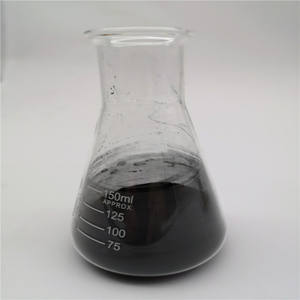
(3D Printing Alloy Metal Materials Stainless Steel 440C Metal Powder)
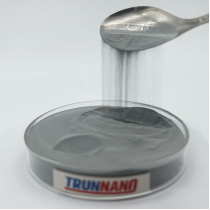
3D Printing Alloy Metal Materials Stainless Steel 440C Metal Powder
Features of 3D Printing Alloy Metal Materials Stainless Steel 440C Metal Powder
Physical Properties
High Melting Point: Stainless Steel 440C metal powder has a relatively high melting point, typically around 1425 – 1450°C. This high melting point allows it to withstand high temperatures during 3D printing processes without premature melting or deformation, ensuring the integrity of the printed structure.
Great Bit Dimension: The powder typically has a fragile and regulated bit dimension circulation, usually in a series of 15 – 53 μm. The significant bits add to excellent flowability, making it possible for smooth and consistent layer deposition in 3D printing. This is critical for accomplishing high-resolution and exact published components.
Good Sphericity: It generally exhibits high sphericity, with spherical particles being preferred as they offer better flow characteristics and can pack more efficiently. This leads to more consistent and dense layers during 3D printing, resulting in improved mechanical properties and surface finish of the printed objects.
Mechanical Properties
High Hardness: 440C stainless steel is known for its high hardness. After 3D printing and appropriate heat treatment, the parts can achieve a hardness of around HRC 58 – 62. This high hardness makes the printed components highly resistant to wear, abrasion, and deformation, making them suitable for applications where durability and long service life are required.
Exceptional Stamina: It has excellent tensile and return toughness. The 3D-published components can endure substantial mechanical loads, stress, and anxieties, making them trusted for usage in architectural elements and components that require birth hefty loads.
Good Toughness: Despite its high hardness, 440C stainless steel powder can also exhibit good toughness. This means the 3D-printed parts can absorb energy and resist cracking or fracturing under impact or dynamic loading conditions. This combination of hardness and toughness makes it a versatile material for various demanding applications.
Chemical Properties
Superior Corrosion Resistance: Stainless Steel 440C contains a high percentage of chromium (around 16 – 18%) and some molybdenum, which provides excellent corrosion resistance. The 3D-printed parts can resist rust and corrosion in a wide range of environments, including exposure to moisture, chemicals, and saltwater. This makes them suitable for applications in harsh conditions, such as in marine, medical, and food processing industries.
Oxidation Resistance: It has good oxidation resistance at elevated temperatures. This property allows the 3D-printed components to maintain their surface integrity and mechanical properties when exposed to high-temperature environments. It makes them useful in applications such as heat treatment equipment and high-temperature machinery.
Heat Treatment Response
Good Heat Treatability: Stainless Steel 440C metal powder responds well to heat treatment processes. It can be hardened and tempered to achieve specific mechanical properties, allowing for further customization of the material’s performance to meet the requirements of different applications. Heat treatment can improve the hardness, strength, and toughness of the 3D-printed parts, enhancing their overall performance and reliability.
Applications Of 3D Printing Alloy Metal Materials Stainless Steel 440C Metal Powder
3D Printing Alloy Metal Materials Stainless Steel 440C Metal Powder has many applications in multiple fields, mainly due to its high hardness, wear resistance, corrosion resistance, and good mechanical properties. The following are some of the main application areas of this material:
Medical field: Due to its biocompatibility and corrosion resistance, 440C stainless steel is often used to manufacture medical devices and implants, such as surgical knives, dental implants, and orthopedic equipment.
Cutting tools and cutting tools: 440C stainless steel’s high hardness and wear resistance make it ideal for manufacturing high-quality cutting tools and cutting tools, such as kitchen knives, scissors, surgical blades, etc.
Aerospace: The aerospace field has extremely high requirements for materials’ strength and corrosion resistance. 440C stainless steel powder-printed components can be used for engine components, gas turbine blades, and other components that must withstand high temperatures and corrosive environments.
Automotive and mechanical manufacturing:In automotive and mechanical manufacturing, 440C stainless steel powder can be used to manufacture wear-resistant parts such as bearings, gears, valves, etc. These components must withstand high pressure and friction, and 440C stainless steel’s high hardness and wear resistance make it an ideal choice.
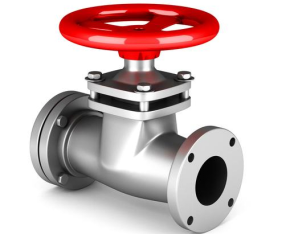
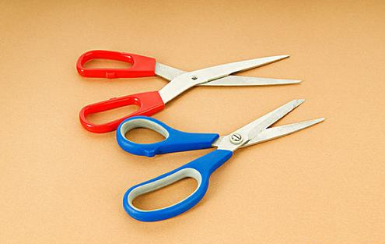
Applications of 3D Printing Alloy Metal Materials Stainless Steel 440C Metal Powder
Mold and tool manufacturing: Due to its high hardness and corrosion resistance, 440C stainless steel is also commonly used to manufacture molds and tools, such as injection molds and die-casting molds.
Electronics and Electrical: 440C stainless steel powder can be used to manufacture contactors and connectors in the electronic and electrical fields because it has good conductivity and corrosion resistance.
Art and Design: In art and design, the 3D printing technology of 440C stainless steel powder provides designers with more creative freedom and design possibilities, enabling them to create artwork and decorations with complex geometric shapes and fine details.
Production Method of 3D Printing Alloy Metal Materials Stainless Steel 440C Metal Powder
Gas Atomization Method
- Melting of Raw Materials: High-purity iron, chromium, nickel, and other alloying elements that meet the composition requirements of Stainless Steel 440C are selected as raw materials. These raw materials are put into a high-temperature melting furnace, such as a vacuum induction furnace or an electric arc furnace, and heated to about 1500 – 1600°C to completely melt and form a homogeneous molten metal liquid.
- Atomization Process: The molten metal liquid is poured from the crucible of the melting furnace through a tundish and flows into an atomization nozzle at a specific rate. At the same time, high-pressure inert gas (such as argon or nitrogen) is sprayed from the atomization nozzle at a high speed. The high-pressure gas shears and shatters the molten metal liquid into tiny droplets.
- Solidification and Cooling: The atomized metal droplets fly out in all directions and solidify rapidly during the flight process. They cool and solidify into spherical or near-spherical metal powders quickly. The solidified powders are collected in a powder collection device at the bottom of the atomization chamber.
Plasma Atomization Method
- Raw Material Preparation: Similar to the gas atomization method, the raw materials are accurately proportioned according to the composition of Stainless Steel 440C and then melted into a molten metal liquid.
- Plasma Atomization: The molten metal liquid is fed into a plasma atomization device. In the device, a high-temperature and high-energy plasma arc is generated. The plasma arc heats and melts the metal liquid again, and at the same time, the intense energy and high-temperature environment cause the metal liquid to be atomized into excellent particles.
- Collection and Screening: The atomized metal powder is collected and then screened to obtain Stainless Steel 440C metal powder with a specific particle size distribution.
Electrode Induction Melting Gas Atomization (EIGA) Method
Electrode Preparation: An electrode of Stainless Steel 440C is prepared, usually by smelting and forging high-purity raw materials into a cylindrical electrode.
Induction Melting: The electrode is placed in an induction melting chamber. An induction coil generates a high-frequency electromagnetic field, which causes the electrode to be heated and melted by induction. The melting temperature is controlled to be appropriate for the atomization process.
Gas Atomization: Similar to the gas atomization method, after the electrode is melted into a molten metal liquid, high-pressure gas is used to atomize the molten metal liquid. The atomized droplets solidify into metal powder, which is then collected and processed to obtain the final Stainless Steel 440C metal powder product.
Mechanical Alloying Method
Post-treatment: After the mechanical alloying process, the obtained powder may undergo processes such as heat treatment and sieving to improve its properties and get the required particle size distribution.
Powder Mixing: Elemental powders of iron, chromium, carbon, and other elements that makeup Stainless Steel 440C are accurately weighed and mixed in a particular proportion.
Mechanical Alloying: The mixed powders are put into a high-energy ball mill. In the ball mill, the powders are subjected to repeated impacts, friction, and deformation by grinding balls. Through a long period of mechanical action, the atoms of different elements diffuse and mix at the interface, gradually forming an alloyed powder with the composition and structure of Stainless Steel 440C.
Company Profile
RBOSCHCO is a trusted global chemical material supplier & manufacturer with over 12-year-experience in providing super high-quality chemicals and nanomaterials, including boride powder, nitride powder, graphite powder, sulfide powder, 3D printing powder, etc.The company has a professional technical department and Quality Supervision Department, a well-equipped laboratory, and equipped with advanced testing equipment and after-sales customer service center.If you are looking for high-quality 3D Printing Alloy Metal Materials Stainless Steel 440C Metal Powder, please feel free to contact us or click on the needed products to send an inquiry.

Storage Condition of 3D Printing Alloy Metal Materials Stainless Steel 440C Metal Powder
1) Store in a dry environment at room temperature.
2) Avoid damp and high temperature.
3) Use immediately after opening the inner packing bag.
Payment Term
L/C, T/T, Western Union, Paypal, Credit Card etc.

Shipment Term
By sea, by air, by express, as customers request.
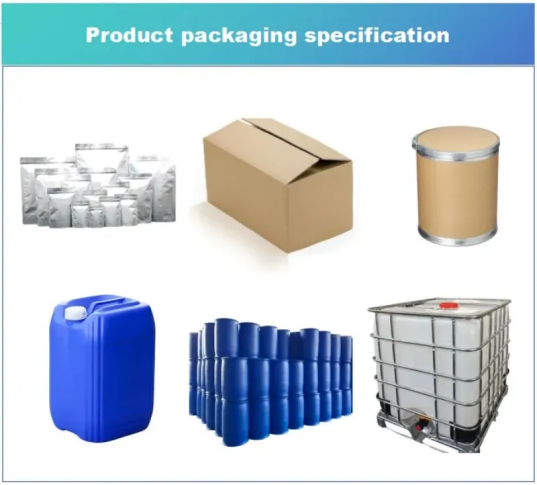
5 FAQs of 3D Printing Alloy Metal Materials Stainless Steel 440C Metal Powder
Q1
What common challenges may arise during the printing process?
Answer:When printing 440C stainless steel powder, there may be some challenges, such as the fluidity of the powder, thermal cracks during the printing process, and warping and deformation of the printed part. Solving these problems requires appropriate process control, equipment calibration, and post-processing.
Q2
What 3D printing processes are suitable for 440C stainless steel powder?
Answer:440C stainless steel powder is suitable for powder bed melting (PBF) processes, such as selective laser melting (SLM) and electron beam melting (EBM). These processes construct objects layer by layer through the selective melting of lasers or electron beams.
Q3
Do I need special post-treatment to print 440C stainless steel powder parts?
Answer:Yes, printed 440C stainless steel components usually require post-treatment, such as heat treatment (annealing), grinding, and polishing to eliminate residual stress, improve surface quality, or improve corrosion resistance.
Q4
What is the strength of the components printed with 440C stainless steel powder?
Answer:The components printed with 440C stainless steel powder have high strength and hardness, making them suitable for applications that can withstand heavy loads and high stresses.
Q5
What is the cost of printing 440C stainless steel powder?
Answer:The cost of 440C stainless steel powder printing is relatively high, mainly because the price of stainless steel powder itself is higher, and the printing equipment and maintenance costs may also be higher
REQUEST A QUOTE
RELATED PRODUCTS
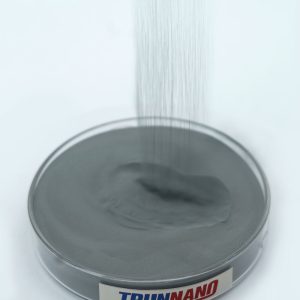
3D Printing Inconel 718 Powder Nickel Alloy Powder
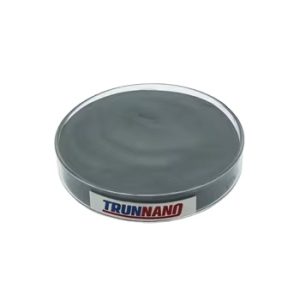
High Quality Spherical Nickel Powder Nickel Metal Powder

Nitinol Nickel Titanium Ni-Ti Alloy Powder
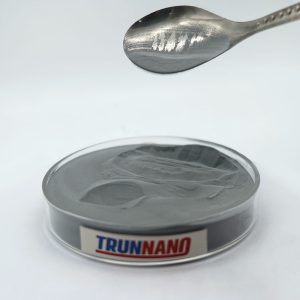
3D Printing Alloy Metal Materials Mold Steel M2 Metal Powder

TC4 Spherical Titanium Alloy Powder Ti6Al4V Good Quality High Purity Hot Sale 3D Printing Powder Advanced Material
